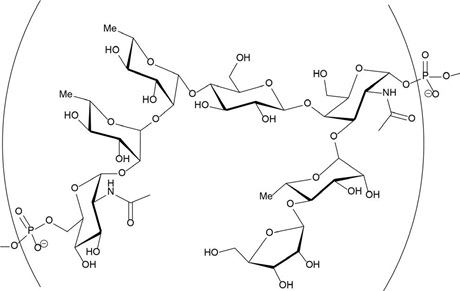Nuclear magnetic resonance (NMR) spectroscopy is a reliable tool for elucidation of carbohydrate structures important to human metabolism and immune-defense.
In biological life, carbohydrates are perhaps most commonly known for their role as an energy source, but they actually fulfill a broad range of tasks. In order to understand these roles better, knowledge of carbohydrate structures is important. The most reliable tool for this purpose is nuclear magnetic resonance (NMR), which was used in the project to elucidate various carbohydrate structures.
Carbohydrates are highly complex molecules. They can be branched and derivatised, making them optimal for specific recognition. This specificity is instrumental in numerous biological processes, for instance in metabolism when a given enzyme will hydrolyze a specific carbohydrate, but not others. Other examples involve the function of the immune-defense, and also the mechanisms used by pathogens to hide from attacks from the immune-defense.
NMR spectroscopy relies on the alignment, or polarization, of nuclear spins when subjected to a magnetic field and the subsequent manipulation of these spins. The outcome of these spin manipulations are then measured using a radio-frequency module. Carbohydrates primarily consist of hydrogen, carbon, and oxygen. NMR is ideal for obtaining data on the positions of hydrogen and carbon in the molecular structure. Both elements have abundantly occurring isotopes (1H and 13C respectively) with precisely the spin necessary for NMR detection.
Firstly, the capsular polysaccharide of Streptococcuspneumoniae was studied. As this polysaccharideis responsible for much of the bacteria’s virulence, understanding the structures of the polysaccharide from different serotypes can improve the understanding of the pathogen. The structure of a novel serotype in serogroup 7 was elucidated.
Secondly, Inonotus obliquus – commonly known as the chaga mushroom – was investigated. This fungus has been used in Eastern European folk medicine to treat a variety of symptoms. It contains several polysaccharides of medicinal interest. These were extracted and purified, and different structural trends were determined.
A third branch of the project focused on β–Lactoglobulin, which is a major protein present in dairy products. Little is known about its ability to bind carbohydrates. Several polysaccharides were fragmented into oligosaccharide mixtures and characterized to be used for binding studies.
Further, human milk oligosaccharides (HMO’s) were investigated. HMO’s are complex, and during synthesis via transglycosylation several products can be formed, making the structural determination troublesome. Here, the transglycosylation products of three different β–acetyl-glucosaminidases using lactose as acceptor were identified.
Finally, dissolution dynamic nuclear polarization was used to increase the sensitivity of single scan solution 13C-NMR. The method is able to increase sensitivity with up to four orders of magnitude, and using a doubly isotopically labelled β–galactopyranoside the lacZ β–galactosidase was investigated. Previously undescribed short-lived transglycosylation products of the enzyme were observed, and by using a kinetic model the hydrolysis and transglycosylation rates were determined.

Repeating unit structure of the capsular polysaccharide from Streptococcus pneumoniae serotype 7C.